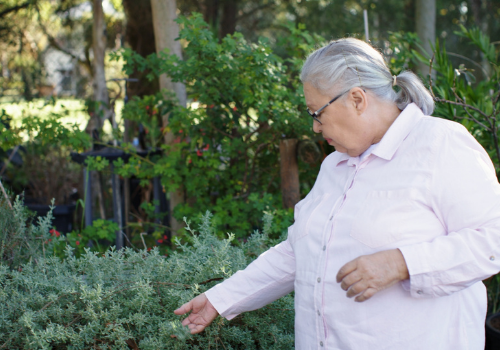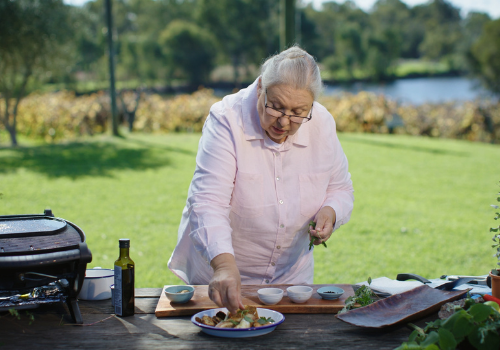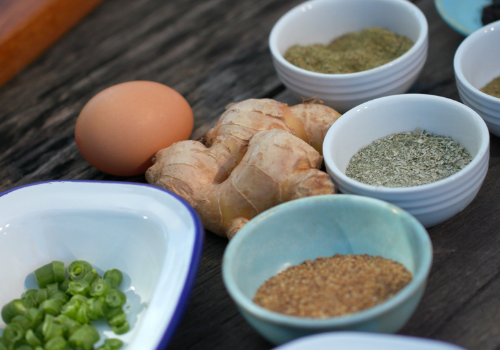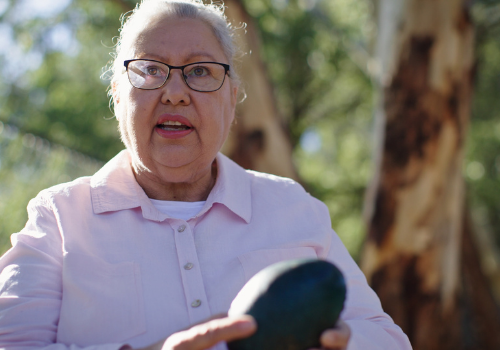Bush foods and philosophy with Dale Tilbrook | Homegrown Goodness
Dale Tilbrook is a Wardandi Bibbulmun woman, which is the area around Margaret River and Busselton in the south west of Western Australia.
We caught up with Dale to learn more about her passion for Australian native edibles, and her interest in passing on her knowledge of eating and cooking with native produce, through the Slow Food Movement.
How has your passion for growing and cooking with native plants and edible produce developed? 
Finding plants in the bush or in my garden that I could use always excited me. My mother was a great gardener and always grew vegetables and I loved creating food, lotions, potions and traditional medicines from fresh ingredients and natural materials.
As a child I realised that Eucalyptus leaves were a key ingredient in cough lollies and decongestants, which made me more aware that plants weren’t just used for food.
When we grow the plants that belong in a certain area, we are choosing those fit for the climate. Apart from getting them going, they need little water beyond that which nature provides and they don’t need fertilisers or pesticides to keep them healthy.
Native gardens support the local insect species including our precious native bees. I can’t describe my joy at watching insects like blue banded bees visiting my garden.

What advice do you have for growing and sourcing native produce?
Native produce is increasingly popular and it is great that we now have suppliers and local nurseries specialising in native food plants.
The main thing is to be mindful of where plants and edible natives grow naturally so that we create the right environment for them to grow in at home.
Dried native herbs are available from speciality stores such as Maalinup as well as from a number of online-only stores.
Gourmet food stores will often have jams, marmalades and chutneys featuring Australian fruits and spices.
What are a few of your favourite native foods and why?
Sandalwood nuts, our local tree nut, and edible varieties of wattleseed are two of my favourite ingredients. Both are high protein, nutritious foods, and grow locally, particularly in the south west of WA.
Kangaroo is our traditional food and I get very upset when people campaign against eating kangaroo. I think it is very disrespectful. Whenever someone says to me that they can’t eat kangaroo, I regard it as an opportunity to educate them on why we should all eat more kangaroo, and emu, if you can find it.
All our native animals travel softly on the land, unlike the introduced animals which have hard hooves, or cloven hooves. Kangaroos aren’t farmed and so the meat is naturally biodynamic. Emus are farmed and there is a market for emu leather as well as the meat and eggs.
How does the Slow Food Movement complement sharing Aboriginal culture and knowledge of native produce?
The Slow Food movement is all about good, clean and fair food for all that is naturally nutritious, and free from fertilisers or pesticides.
The Slow Food movement was started by Carlo Petrini in Italy in 1986 to protect regional traditions, promote good and healthy foods, preserve biodiversity in our food and ensure farmers received fair compensation for their labours.
“As a member of Slow Food, I have had the privilege of being able to address people from across the globe about Aboriginal culture, history and food.”
The aim is to focus on eating food that is in season and locally grown, as opposed to growing everything year-round in artificial spaces, forcing the environment to grow what isn’t natural to that area or importing what isn’t available locally.

People seem to be more anxious about food security and want to know about the food that Aboriginal people have enjoyed from the huge bush supermarket for thousands of years.
In Western Australia, it is not feasible to forage bush foods, but I encourage people to grow native food species in their own garden along with other herbs and vegetables.
These small steps give people a better understanding of what it is like to eat something you have grown yourself.
I pass on all my knowledge to younger family members, sharing stories and information, teaching them language and encouraging the older ones to learn more. I love to take people on a journey of learning about the nutritional value of certain Australian native foods and I stick to those that are accessible.
How can we learn more about Aboriginal culture?
In WA we have an incredible organisation called WAITOC (Western Australian Indigenous Tourism Operators Council) where you can find every Aboriginal tourism operator.
“The best way to learn about Aboriginal culture and history is to engage with Aboriginal people. I encourage people to go on tours and experience interacting with Aboriginal people wherever they go.”
From fishing tours, to camping with custodians to bush food tours and cultural experiences, you will find amazing Aboriginal people willing to share with you.
Dale Tilbrook and Maalinup Gallery
In the late 90’s Dale and her brother Lyall opened the Maalinup Gallery in the Swan Valley. The Gallery offers Aboriginal cultural workshops as well as art, souvenirs and bush tucker.
To join Dale on one of her bush food or art workshops, visit daletilbrookexperiences.com.au or visit Dale at Maalinup Aboriginal Gallery to say hello and peruse and purchase Aboriginal art and bush foods.